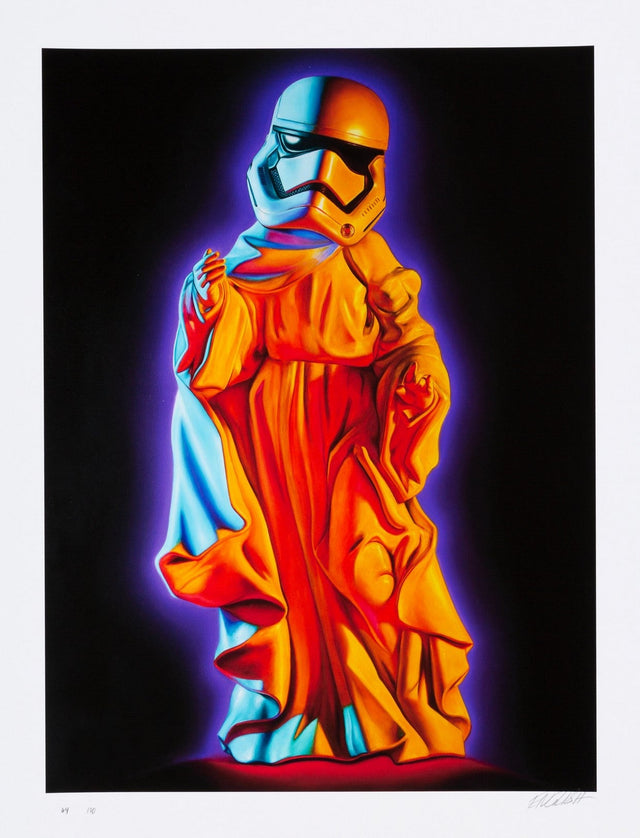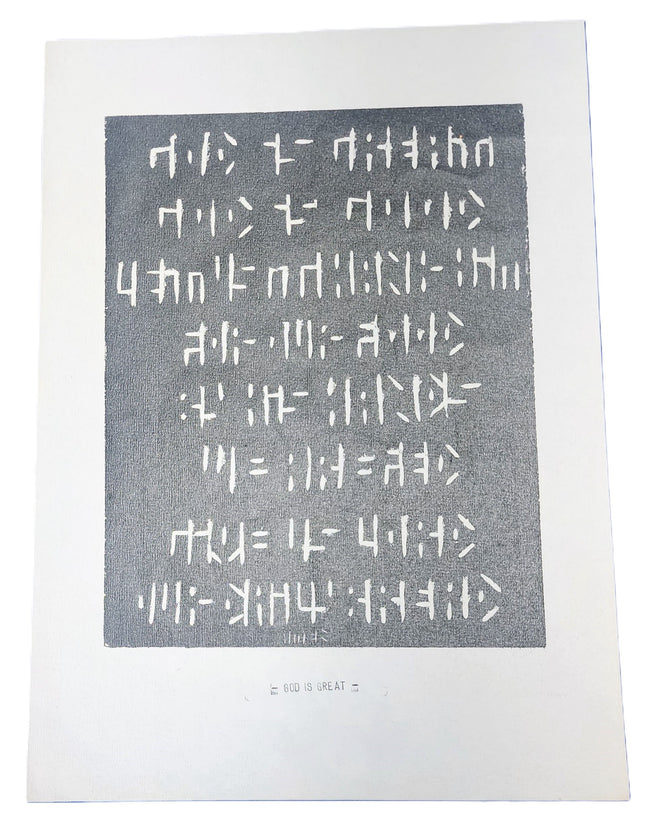
God

Other Artists God Is Great Script Woodblock Print by Unknown
God Is Great Script Woodblock Print by Unknown Hand-Pulled on Textured Fine Art Paper Limited Edition Artwork. 2008 Limited Edition Woodblock Woodcut Block Print Artwork Size 12x17 of Black & White Fictional Script Words from a St Louis Artist I Forgot the Name of. The Eloquent Silence of "God Is Great" Woodblock Print In visual art, few mediums speak as poignantly to the union of the ancient and the avant-garde as woodblock printing. The "God Is Great" woodblock print, a limited edition piece crafted in 2008, exemplifies the enduring relevance of this time-honored technique in modern artistic discourse. Although the creator from St. Louis remains unnamed, the artwork itself—a stark interplay of black and white fictional script on a textured fine art paper, size 12x17 inches—communicates a universal message that transcends the need for authorial identity. Woodblock Printing: A Dialogue Across Time Woodblock printing, one of the oldest methods of printmaking, has a storied history that stretches from ancient East Asia to contemporary art studios around the globe. The method involves carving an image into the surface of a block of wood, inking the surface, and then pressing it onto paper or fabric to create an impression. With its bold script and abstract composition, this particular piece reflects the technique's robust potential for precision and expression. The black and white color scheme of "God Is Great" reinforces the timeless nature of the print. At the same time, the enigmatic script suggests a language beyond words, an attempt to capture the inexpressible. With its minimalistic yet profound impact, this aesthetic finds echoes in the visual strategies of street pop art and graffiti, where the message is often condensed into symbols or stylized text that resonates with viewers on an instinctual level. Cultural Resonance in Contemporary Art "God Is Great" stands as an artifact of cultural resonance, embodying the essence of what many street artists and pop art practitioners aim to achieve—a piece that is accessible yet profound, immediate yet enduring. It prompts viewers to ponder the power of language, the act of communication, and the possibility of divine presence in the mundane. Despite the anonymity of its creator, the print carries a weight that speaks to the shared human quest for understanding and connection. This woodblock print's presence within pop art, street art, and graffiti is a testament to the fluid boundaries of art forms and the shared visual language that unites disparate genres. While the origin of "God Is Great" may be shrouded in mystery, the work becomes a vessel for contemplation and dialogue, inviting interpretation and engagement from those who encounter it. The "God Is Great" woodblock print, even without the renown of a known artist's signature, is a compelling testament to the power of traditional printmaking techniques in the contemporary artistic landscape. It reminds us that art, in its purest form, is a dialogue that spans history, transcends barriers, and continues to evolve, inviting each viewer to partake in its ongoing narrative.
$100.00


